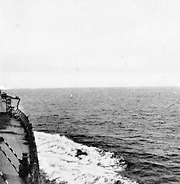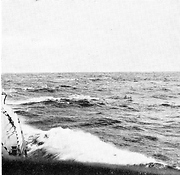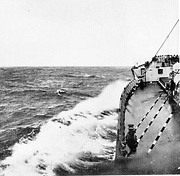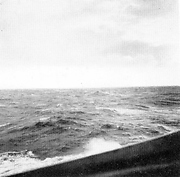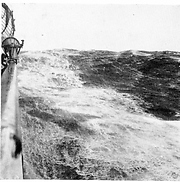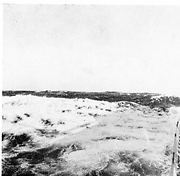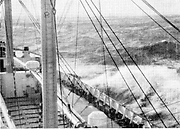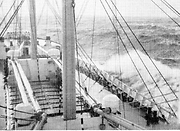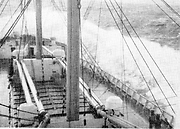 Hartlepool Sports & Leisure
Hartlepool Sports & Leisure
- Cinemas, Theatres & Dance Halls
- Musicians & Bands
- At the Seaside
- Parks & Gardens
- Caravans & Camping
- Sport
 Hartlepool Transport
Hartlepool Transport
- Airfields & Aircraft
- Railways
- Buses & Commercial Vehicles
- Cars & Motorbikes
- The Ferry
- Horse drawn vehicles
 A Potted History Of Hartlepool
A Potted History Of Hartlepool
- Unidentified images
- Sources of information
- Archaeology & Ancient History
- Local Government
- Printed Notices & Papers
- Aerial Photographs
- Events, Visitors & VIPs
 Hartlepool Trade & Industry
Hartlepool Trade & Industry
- Trade Fairs
- Local businesses
- Iron & Steel
- Shops & Shopping
- Fishing industry
- Farming & Rural Landscape
- Pubs, Clubs & Hotels
 Hartlepool Health & Education
Hartlepool Health & Education
- Schools & Colleges
- Hospitals & Workhouses
- Public Health & Utilities
- Ambulance Service
- Police Services
- Fire Services
 Hartlepool People
Hartlepool People
 Hartlepool Places
Hartlepool Places
 Hartlepool at War
Hartlepool at War
 Hartlepool Ships & Shipping
Hartlepool Ships & Shipping

Cairndhu - Service Performance Trials 1953
Service-performance trials carried out in the North Atlantic on S.S. “Cairndhu”
The following article has been extracted from a paper published in Volume 75 Transactions of the North East Coast Institution of Engineers and Shipbuilders, 1957-58.
“This paper describes trials carried out by the British Shipbuilding Research Association in a dry-cargo vessel under normal service conditions in the North Atlantic… to study the performance of the vessel under different conditions… [for] analysing service performance, power allowances etc.” The full paper is very technical, however, it does describe the sea conditions experienced by the ‘Cairndhu’ on a round trip Newcastle-Montreal-Newcastle [October/November 1953].
“The S.S. “Cairndhu” is a single-screw, steam-turbine driven dry-cargo vessel of shelter-deck type with accommodation for twelve passengers. The vessel is owned by the Cairn Line of Steamships Ltd., Newcastle upon Tyne, and was built by William Gray & Co. Ltd., West Hartlepool. She is designed for service in the North Atlantic, going North about from Newcastle upon Tyne and other northern ports to Montreal and St. John, New Brunswick. The maiden voyage was made in October 1952.
The principal dimensions are as follows:
Length overall 444ft 6ins
Length b.p. 419ft 0ins
Breadth extreme 60ft 2 1/4 ins
Breadth moulded 60ft 0ins
Depth moulded to upper deck 37ft 0ins
Deadweight 9,200 tons
Gross tonnage 7,503
Service shaft horse-power 4,650
Service speed, loaded 13 knots
Propeller diameter (4-bladed) 18ft 9ins
Steam is supplied by two water-tube boilers having a working pressure of 225lbs per sq. ins. The propelling machinery consists of a set of three steam turbines transmitting power through double-reduction gearing to the propeller shaft.
The outward passage was from Grangemouth to Montreal with the vessel in moderately light condition. On the first day, 24th October, the weather was fairly good with a slight following sea, a moderate following gale blowing up during the afternoon and evening. During the 25th and most of the 26th, the wind remained at Force 6 or above and the vessel was rolling and pitching heavily at times in a rough sea. Towards late afternoon of the 26th, the wind rose suddenly and veered NW. The vessel was then rolling and pitching heavily at times in a rough, short, steep sea. Conditions deteriorated still further as the evening drew on and the vessel was forced to heave to and run at half speed into the seas.
By the morning of the 27th there was a very rough sea running and the wind was Force 10/11. However, the storm abated somewhat during the day and the normal course was resumed. The 28th opened with a strong south-westerly wind and moderate sea but before noon the wind had veered NW again, increasing in strength until at midnight it was Force 9/10. As before, speed was reduced and course altered. As a result of this gale, the conditions on the morning of the 29th were the worst encountered on this passage. The wind decreased a little during the day but increased again in the late afternoon to a moderate to fresh gale which produced a very confused sea. During the last day out from Belle Isles Straits, the weather conditions gradually improved until by evening the ship was rolling and pitching easily in a moderate swell. The 31st was spent running up the St. Lawrence in extremely good weather conditions.
For the return voyage from Port Alfred to Newcastle, the vessel was fully loaded. The first two days, November 12th and 13th, were spent in the St. Lawrence in weather conditions which were again extremely good. During the evening of the 13th the wind freshened to Force 6, increased to a moderate following gale by the 14th, and remained at or above this force until the evening of the 17th, thence to Force 5/6 on the 18th. On the 19th, conditions were fairly good at the start of the day, but by mid-afternoon, the wind had increased to Force 6 producing a short, moderate sea. The highest waves were encountered on the 16th… between 25ft and 35ft high for most of the day, with an occasional wave which probably exceeded 40ft.
…the vessel behaved very well in seas from ahead, astern, and on the beam. With heavy waves just abaft the bow the vessel occasionally gave a heavy combined pitch and roll as a wave crest passed the bow, which produced a heavy yawing movement in the direction of the roll. When heavy seas were encountered on the quarter, a wave overtaking the stern tended to lift it, again producing a combined pitch and roll and tending to take the stern with the wave. Here again considerable yawing occurred although it was noticeable that no water was taken over the stern.
Slamming was experienced on several occasions on the outward passage during the night of the 26th October and the late morning and afternoon of the 28th. On these occasions the seas were ahead or just off the bow… The waves were fairly regular and slamming appeared to increase in intensity as the steepness of the waves increased. After the occurrence of a slam, heavy main-hull vibration was produced…”
The paper also contained a number of data Tables (which can be made available on request), together with nine photographs illustrating various sea conditions experienced on the voyage, of which three are reproduced here.
If anyone out there sailed on the ‘Cairndhu’ on this particular voyage, we would love to hear your stories.
Related items :
 Cairndhu Service Performance
Cairndhu Service Performance
A series of images accompanying a paper published in Volume 75 Transactions of the North East Coast Institution of Engineers and Shipbuilders, 1957-58.
More detail »




